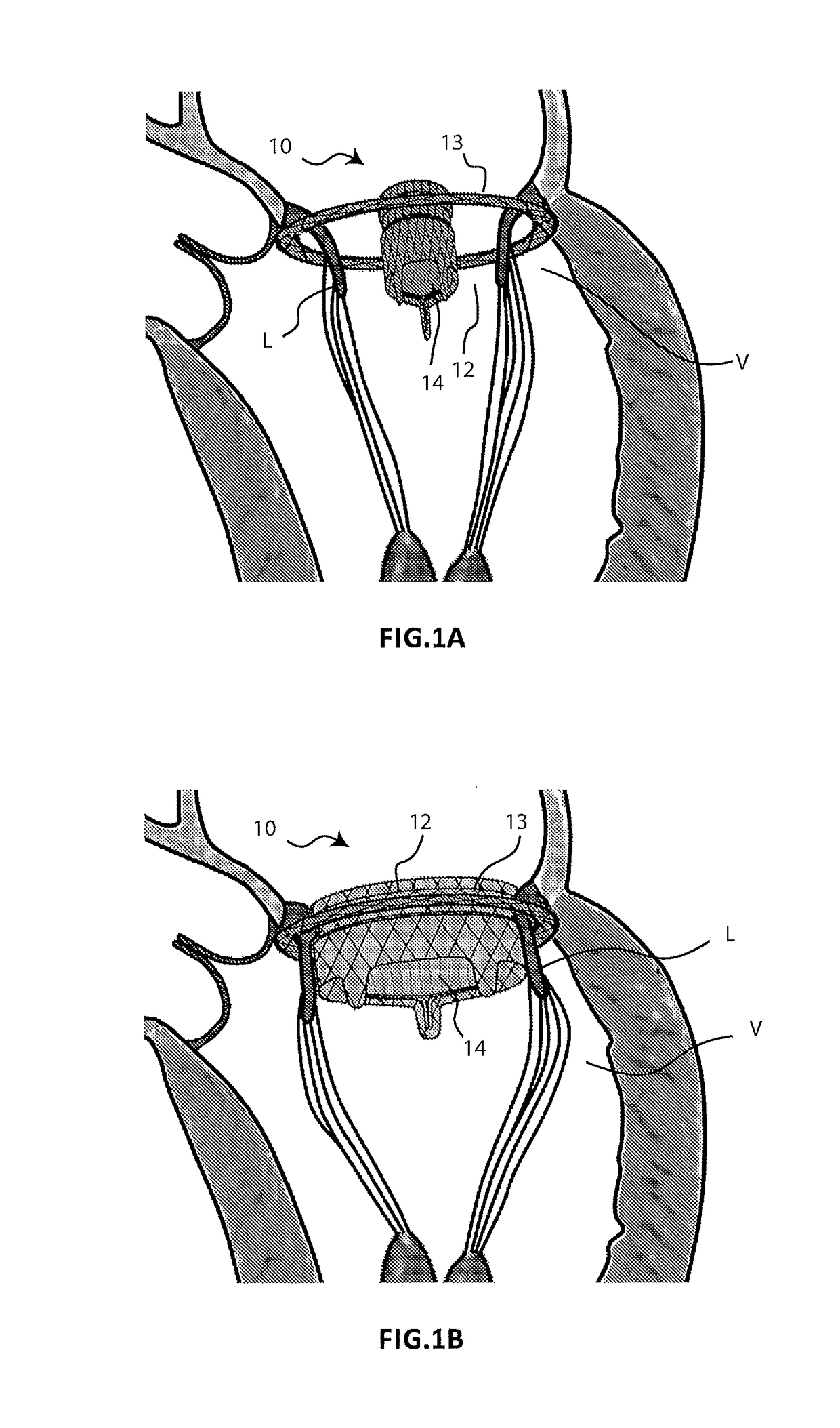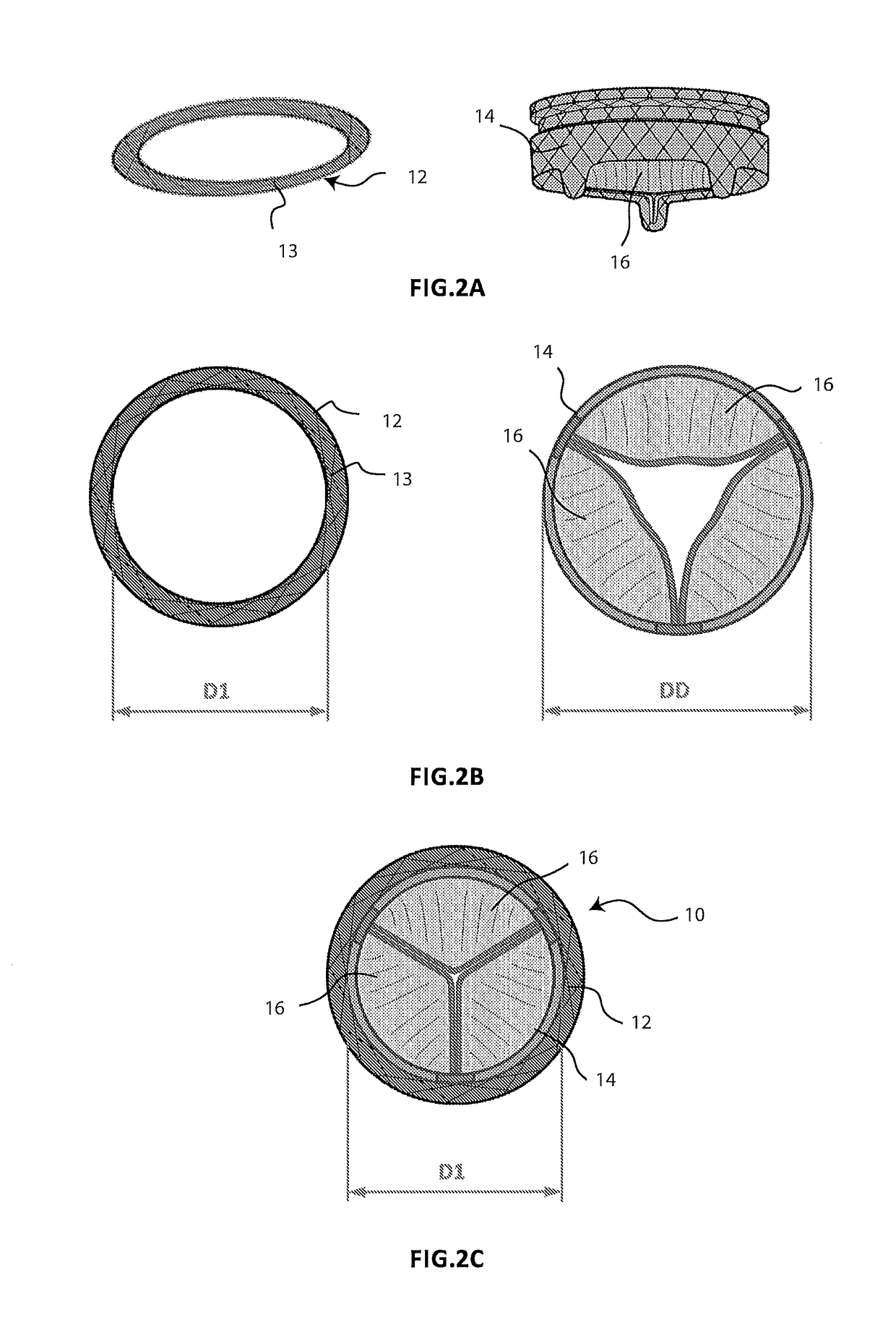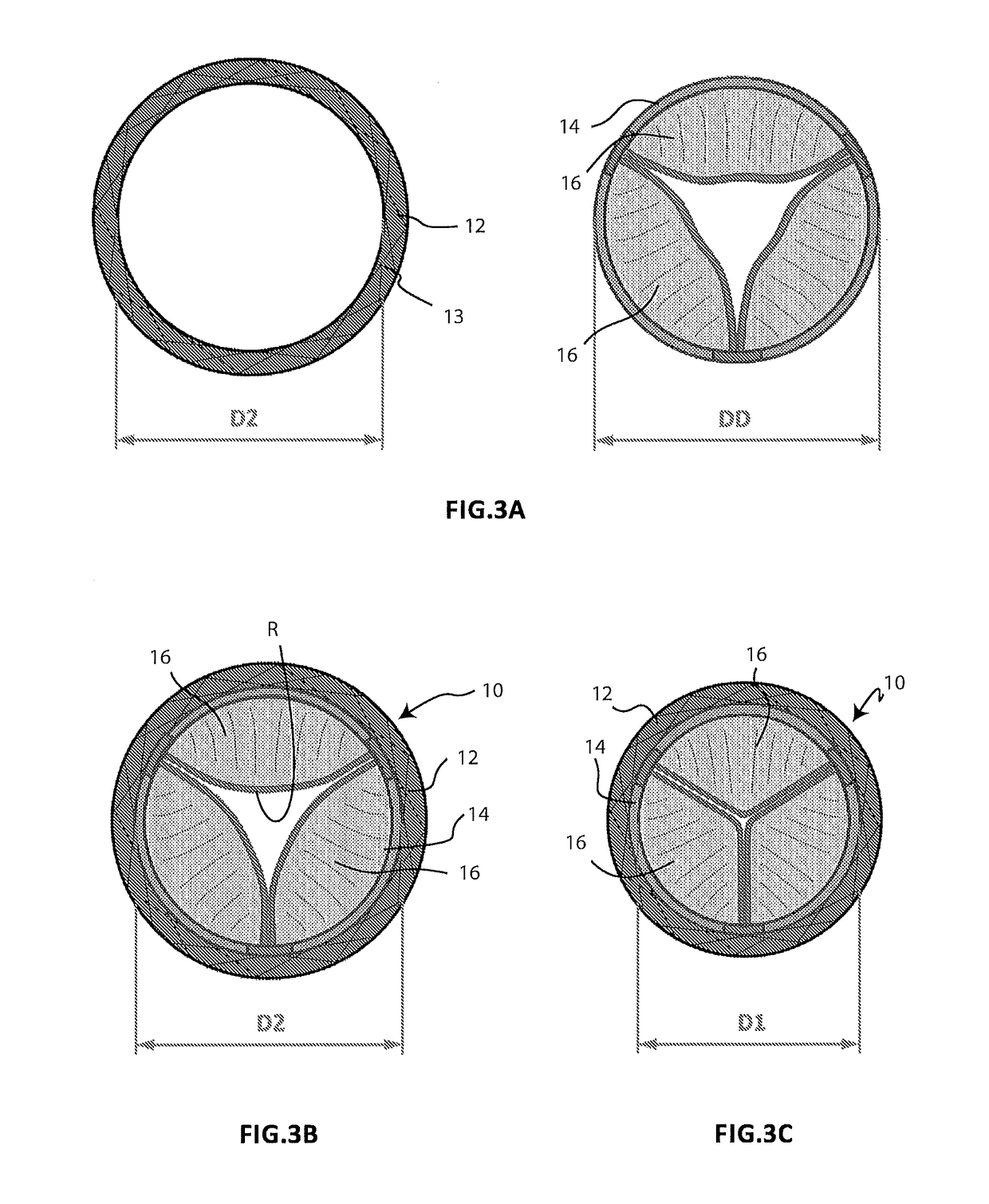Cardiac valve prosthesis
a prosthetic device and cardiac valve technology, applied in the field of implantable prosthetic devices, can solve the problems of inability to fully function, and inability to fully function, and achieve the effect of reducing the capacity of filler materials, effective fluid tightness, and increasing circumferential exten
- Summary
- Abstract
- Description
- Claims
- Application Information
AI Technical Summary
Benefits of technology
Problems solved by technology
Method used
Image
Examples
Embodiment Construction
[0053]FIGS. 1A and 1B schematically illustrate two different steps of the implantation method of a prosthesis 10 for a cardiac valve according to the present invention, which prosthesis is used to replace the functionality of a native atrio-ventricular valve V to be treated. The prosthesis 10 comprises a first component in the form of an annular element 12 and a second component in the form of a central member 14, which supports prosthetic valve leaflets 16. During the implantation method, the annular element 12 is positioned outside the native atrio-ventricular valve V in order to completely surround it, while the central member 14 is expanded inside the same native atrio-ventricular valve V (FIG. 1A). The expansion of the central member 14 causes the two components 12, 14 to be connected to each other (FIG. 1B). The contact between the two components 12, 14 is not direct but instead occurs with the interposition of the leaflets L of the native valve V which remain interpolated bet...
PUM
| Property | Measurement | Unit |
|---|---|---|
| Force | aaaaa | aaaaa |
| Deformation enthalpy | aaaaa | aaaaa |
| Biodegradability | aaaaa | aaaaa |
Abstract
Description
Claims
Application Information
 Login to View More
Login to View More - R&D
- Intellectual Property
- Life Sciences
- Materials
- Tech Scout
- Unparalleled Data Quality
- Higher Quality Content
- 60% Fewer Hallucinations
Browse by: Latest US Patents, China's latest patents, Technical Efficacy Thesaurus, Application Domain, Technology Topic, Popular Technical Reports.
© 2025 PatSnap. All rights reserved.Legal|Privacy policy|Modern Slavery Act Transparency Statement|Sitemap|About US| Contact US: help@patsnap.com



